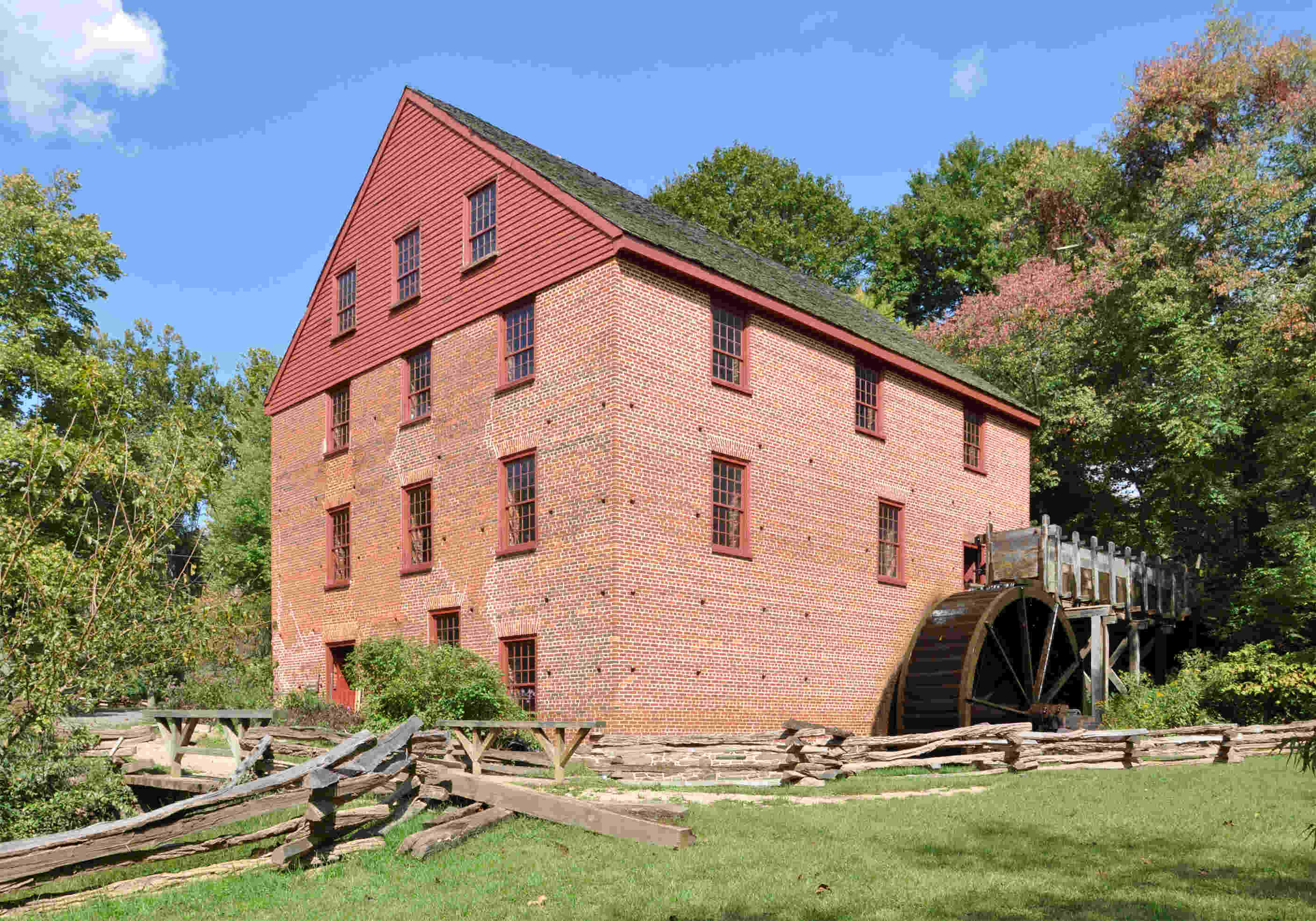Secrets Of Virginia’s Colvin Run Gristmill Operations

Ever wondered how a gristmill works? Virginia's Colvin Run Gristmill offers a fascinating glimpse into the past. This historic site, built in the early 19th century, still grinds grain just like it did over 200 years ago. Visitors can see the massive water wheel in action, powering the millstones that crush wheat and corn into flour and meal. The miller explains each step, from cleaning the grain to bagging the final product. It's a hands-on history lesson that shows how technology has evolved while some methods remain timeless. Perfect for families, history buffs, or anyone curious about old-world craftsmanship.
The Historical Significance of Colvin Run Gristmill
Colvin Run Gristmill, a historic gem in Virginia, offers a glimpse into the past. This 19th-century mill still grinds grain, just as it did over a century ago. Let's explore the secrets behind its operations.
The Mill's Architecture
The architecture of Colvin Run Gristmill is a marvel. Its sturdy stone walls and wooden beams have stood the test of time. Each part of the mill plays a crucial role in its function.
- Water Wheel: The heart of the mill, this massive wheel harnesses water power to turn the millstones.
- Millstones: These heavy stones grind grain into flour. Their grooves are meticulously carved to ensure efficient grinding.
- Gristmill Building: The multi-story structure houses the machinery and provides space for grain storage.
The Milling Process
Understanding the milling process reveals the ingenuity of early engineers. Each step transforms raw grain into usable flour.
- Cleaning: Grain is cleaned to remove debris before milling.
- Grinding: Cleaned grain is fed between the millstones, where it is ground into flour.
- Sifting: Ground flour is sifted to separate fine flour from coarser bran.
The Role of the Miller
The miller is the unsung hero of the gristmill. Their expertise ensures smooth operations and high-quality flour production.
- Maintenance: Regular maintenance of the millstones and machinery is essential to keep the mill running efficiently.
- Operation: The miller controls the flow of grain and water, adjusting as needed to produce the desired flour consistency.
- Quality Control: Ensuring the final product meets standards is a critical part of the miller's job.
The Mill's Impact on the Community
Colvin Run Gristmill was more than just a place to grind grain. It was a community hub, providing essential services and fostering social connections.
- Economic Hub: Farmers brought their grain to be milled, supporting local agriculture.
- Social Gathering: The mill served as a meeting place where neighbors exchanged news and ideas.
- Education: Today, the mill educates visitors about historical milling practices and local history.
Preservation Efforts
Preserving Colvin Run Gristmill ensures future generations can appreciate its historical significance. Ongoing efforts keep the mill in working order.
- Restoration Projects: Regular restoration work maintains the mill's structure and machinery.
- Volunteer Programs: Volunteers play a vital role in preservation and educational programs.
- Public Engagement: Events and tours engage the public, raising awareness and support for the mill.
Visiting Colvin Run Gristmill
A visit to Colvin Run Gristmill offers a unique experience. Witnessing the mill in action brings history to life.
- Guided Tours: Knowledgeable guides provide insights into the mill's history and operations.
- Demonstrations: Live milling demonstrations show the process from start to finish.
- Interactive Exhibits: Hands-on exhibits allow visitors to explore milling techniques and tools.
Conclusion
Colvin Run Gristmill stands as a testament to the ingenuity and hard work of past generations. Its continued operation and preservation offer a window into history, making it a must-visit destination in Virginia.
Why Colvin Run Gristmill is Worth a Visit
Colvin Run Gristmill offers a unique glimpse into Virginia's history. This historic site showcases the engineering marvels of the past, with its working waterwheel and grinding stones. Visitors can see firsthand how grain was milled in the 19th century. The mill is not just a museum; it's a living piece of history. Guided tours provide detailed insights into the mill's operations, making it educational and engaging for all ages. The surrounding park area offers scenic trails and picnic spots, perfect for a family outing. Whether you're a history buff or just looking for a peaceful day out, Colvin Run Gristmill has something to offer. Don't miss the chance to step back in time and experience this historic gem.

